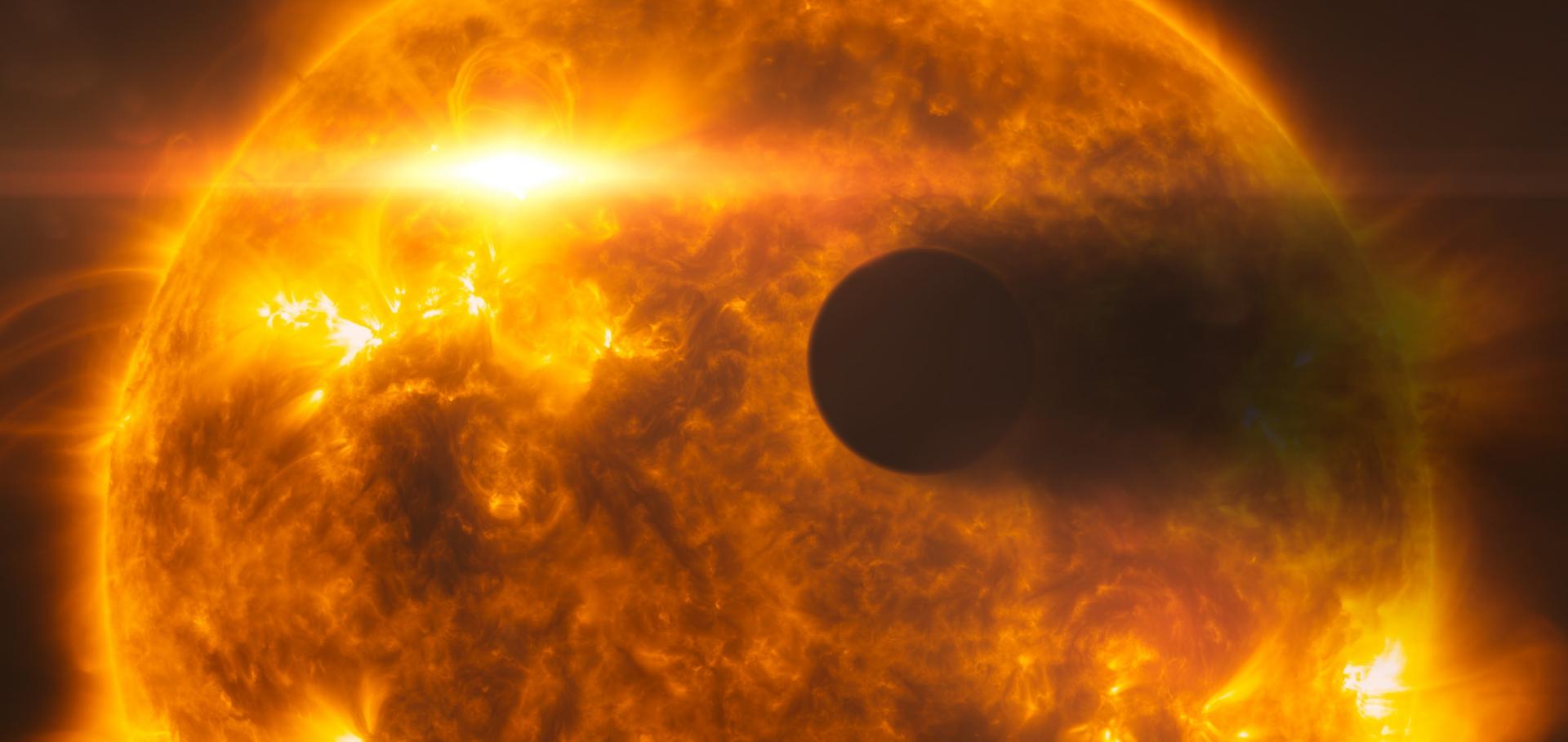MML 53: A new low-mass, pre-main sequence eclipsing binary in the Upper Centaurus-Lupus region discovered by SuperWASP
Astronomy and Astrophysics 522:2 (2010)
Abstract:
We announce the discovery of a new low-mass, pre-main sequence eclipsing binary, MML 53. Previous observations of MML 53 found it to be a pre-main sequence spectroscopic multiple associated with the 15-22 Myr Upper Centaurus-Lupus cluster. We identify the object as an eclipsing binary for the first time through the analysis of multiple seasons of time series photometry from the SuperWASP transiting planet survey. Re-analysis of a single archive spectrum shows MML 53 to be a spatially unresolved triple system of young stars which all exhibit significant lithium absorption. Two of the components comprise an eclipsing binary with period, P = 2.097891(6) ± 0.000005 and mass ratio, q ∼ 0.8. Here, we present the analysis of the discovery data. © 2010 ESO.ASTEP 400: A telescope designed for exoplanet transit detection from Dome C, Antarctica
Proceedings of SPIE - The International Society for Optical Engineering 7733:PART 1 (2010)
Abstract:
The Concordia Base in Dome C, Antarctica, is an extremely promising site for photometric astronomy due to the 3-month long night during the Antarctic winter, favorable weather conditions, and low scintillation. The ASTEP project (Antarctic Search for Transiting ExoPlanets) is a pilot project which seeks to identify transiting planets and understand the limits of visible photometry from this site. ASTEP 400 is an optical 40cm telescope with a field of view of 1° × 1°. The expected photometric sensitivity is 1E-3, per hour for at least 1,000 stars. The optical design guarantees high homogeneity of the PSF sizes in the field of view. The use of carbon fibers in the telescope structure guarantees high stability. The focal optics and the detectors are enclosed in a thermally regulated box which withstands extremely low temperatures. The telescope designed to run at -80°C (-110°F) was set up at Dome C during the southern summer 2009-2010. It began its nightly observations in March 2010. © 2010 SPIE.A new look at NICMOS transmission spectroscopy of HD189733, GJ-436 and XO-1: no conclusive evidence for molecular features
(2010)
Accretion dynamics and disk evolution in NGC 2264: A study based on CoRoT photometric observations
Astronomy and Astrophysics 519:9 (2010)
Abstract:
Context. The young cluster NGC 2264 was observed with the CoRoT satellite for 23 days uninterruptedly in March 2008 with unprecedented photometric accuracy. We present the first results of our analysis of the accreting population belonging to the cluster as observed by CoRoT. Aims.We search for possible light curve variability of the same nature as that observed in the classical T Tauri star AA Tau, which was attributed to a magnetically controlled inner disk warp. The inner warp dynamics is supposed to be directly associated with the interaction between the stellar magnetic field and the inner disk region. Methods.We analyzed the CoRoT light curves of 83 previously known classical T Tauri stars that belong to NGC 2264 classifying them according to their light-curve morphology. We also studied the CoRoT light-curve morphology as a function of a Spitzer-based classification of the star-disk systems. Results.The classification derived on the basis of the CoRoT light-curve morphology agrees very well with the Spitzer IRAC-based classification of the systems. The percentage of AA Tau-like light curves decreases as the inner disk dissipates, from 40%±10% in systems with thick inner disks to 36%± 16% in systems with anemic disks and zero in naked photosphere systems. Indeed, 91%±29% of the CTTS with naked photospheres exhibit pure spot-like variability, while only 18%±7% of the thick disk systems do so, presumably those seen at low inclination and thus free of variable obscuration. Conclusions. AA Tau-like light curves are found to be fairly common, with a frequency of at least ∼30 to 40% in young stars with inner dusty disks. The temporal evolution of the light curves indicates that the structure of the inner disk warp, located close to the corotation radius and responsible for the; obscuration episodes, varies over a timescale of a few (∼1-3) rotational periods. This probably reflects the highly dynamical nature of the star-disk magnetospheric interaction. © 2010 ESO.Transiting exoplanets from the CoRoT space mission: XII. CoRoT-12b: A short-period low-density planet transiting a solar analog star
Astronomy and Astrophysics 520:14 (2010)


